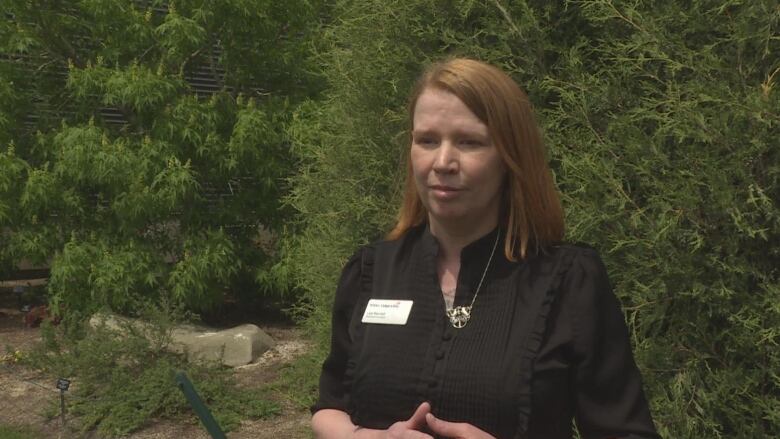Calgary researchers release endangered tadpoles in B.C. wetlands
The northern leopard frog is endangered in the province

Researchers with the Wilder Institute/Calgary Zoo have recently translocated more than a thousand tadpoles towetland areas in southeastern B.C.
Working with the B.C. Northern Leopard Frog Recovery Team, they're hoping the project will help the endangered frog's population in the province bounce back after years of declines.
Researchers say there's only one known surviving native population of northern leopard frogs in B.C. That population is located in the Creston Valley, and work this year includes translocating tadpoles to wetlands near Kimberley.
Wilder Institute/Calgary Zoo population ecologist Lea Randall, who is also a member of the B.C. Northern Leopard Frog Recovery Team, says the group recently released about 1,600 tadpoles of the "ubiquitous species" to help recover the population.

The following interview has been edited for clarity and length.
Question: Can you tell us a little bit about the research that you're doing?
Randall: We've been doing some fieldwork trying to reintroduce northern leopard frogs into their historic range where they have become absent.
Earlier this week, we translocated northern leopard frog tadpoles from the last place where they've been found in British Columbia and the Creston Valley to our new translocation site, which is located near Kimberley. We were able to move about 1,600 tadpoles, which is a good start, but we have some upcoming plans working with our partners.
At the Wilder Institute/Calgary Zoo, we have a captive breeding program for northern leopard frogs. But we also work with the Vancouver Aquarium and the Edmonton Valley Zoo who are producing tadpoles for us to release as well. Those releases we plan to do in the next month.
Q: What is the status of that frog in B.C. right now?
Randall: Northern leopard frogs are found across Canada, but as you go farther west, their populations dwindle. In British Columbia, they're actually considered endangered. We only have a single population left in the Creston Valley area.
There's the boreal prairie population, which is considered at-risk. And in Alberta, they're considered threatened.

Q: Tell us about the frogs' roleas an environmental canary in the coal mine.
Randall: Amphibians are often referred to as the canary in the coal mine, and the reason for this is they can be really susceptible to different environmental contaminants that are found in water.
So if you don't find frogs in a location, that could be an indicator that that water just is no longer suitable. Frogs often breathe through their skin, so anything that is in that water that would be a chemical can actually pass through their skin quite easily, which can lead to their death.
Amphibians are actually one of those taxa that are disappearing at the greatest rate. We think that a lot of those reasons are due to habitat loss, particularly wetland loss has been a big problem. But we also have diseases such as chytrid fungus, which are decimating populations globally.
And when you think of the northern leopard frog, that was really one of the most charismatic and iconic species that we have in Canada.
Q: Why is this frog important?
Randall:Northern leopard frogs are important because they have been part of that environment for eons. The tadpoles are important because they actually eat algae, which can help improve the water quality for many other species. And then once the tadpoles reach metamorphosis, they turn into frogs and they help transfer that nutrients from the aquatic environment to the terrestrial environment.
And on top of that, there's a lot of other things that like to eat northern leopard frog. So, it's kind of the full circle of life.
I think it's really important that we do this because I think that we played a role in the demise of this species. So, I think we have a responsibility to try and bring them back, and they're a really important component of the ecosystem.
With files from Dave Gilson












_(720p).jpg)


 OFFICIAL HD MUSIC VIDEO.jpg)
.jpg)



























































































